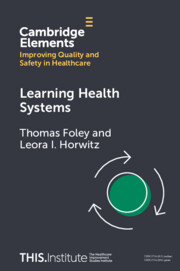Refine search
Actions for selected content:
280 results
Chapter 9 - Qualitative Research
- from Section 2 - Tools and Methodologies
-
-
- Book:
- Research Methods in Mental Health
- Published online:
- 31 October 2025
- Print publication:
- 20 November 2025, pp 135-155
-
- Chapter
- Export citation
Enhancing the quality of systematic reviews and meta-analyses
-
- Journal:
- BJPsych Open / Volume 11 / Issue 6 / November 2025
- Published online by Cambridge University Press:
- 04 November 2025, e266
-
- Article
-
- You have access
- Open access
- HTML
- Export citation
Chapter 13 - Reductive Realism
- from Part V - Categories
-
-
- Book:
- Suárez's <i>Metaphysical Disputations</i>
- Published online:
- 13 October 2025
- Print publication:
- 30 October 2025, pp 241-256
-
- Chapter
- Export citation
Exploring the methodological quality and risk of bias in 200 systematic reviews: A comparative study of ROBIS and AMSTAR-2 tools
-
- Journal:
- Research Synthesis Methods ,
- Published online by Cambridge University Press:
- 27 October 2025, pp. 1-30
-
- Article
-
- You have access
- Open access
- HTML
- Export citation
The role of digital platforms in market coordination through quality valuations. The case of restaurants
-
- Journal:
- European Journal of Sociology / Archives Européennes de Sociologie / Volume 66 / Issue 1 / April 2025
- Published online by Cambridge University Press:
- 04 September 2025, pp. 1-31
-
- Article
-
- You have access
- Open access
- HTML
- Export citation
28 - Healthcare quality and service improvement
- from Part 5 - Drives Innovation
-
-
- Book:
- Leading and Managing Health Services
- Published online:
- 15 August 2025
- Print publication:
- 28 August 2025, pp 316-329
-
- Chapter
- Export citation
23 - Creativity and visioning
- from Part 5 - Drives Innovation
-
-
- Book:
- Leading and Managing Health Services
- Published online:
- 15 August 2025
- Print publication:
- 28 August 2025, pp 258-267
-
- Chapter
- Export citation
Chapter 5 - Compassion in Healthcare
- from Part I - Compassion in Healthcare
-
- Book:
- Handbook of Compassion in Healthcare
- Published online:
- 27 June 2025
- Print publication:
- 17 July 2025, pp 44-51
-
- Chapter
-
- You have access
- Open access
- HTML
- Export citation
Influence of solid–liquid compositions and contact time during maturation on the properties of artificial peloids for use in pelotherapy
-
- Journal:
- Clay Minerals / Volume 60 / Issue 2 / June 2025
- Published online by Cambridge University Press:
- 10 July 2025, pp. 143-162
-
- Article
- Export citation
119 - Adult Order Sets: Medications
- from Subsection 12A - Order Sets – Adult
-
-
- Book:
- Observation Medicine
- Published online:
- 27 June 2025
- Print publication:
- 26 June 2025, pp 839-855
-
- Chapter
- Export citation
122 - Pediatric Order Sets: General Order Sets
- from Subsection 12B - Order Sets – Pediatric
-
-
- Book:
- Observation Medicine
- Published online:
- 27 June 2025
- Print publication:
- 26 June 2025, pp 871-874
-
- Chapter
- Export citation
Model weighting for ISMIP6-Greenland based on observations and similarity among models
- Part of
-
- Journal:
- Annals of Glaciology / Volume 66 / 2025
- Published online by Cambridge University Press:
- 26 June 2025, e14
-
- Article
-
- You have access
- Open access
- HTML
- Export citation
121 - Pediatric Order Sets: Medications
- from Subsection 12B - Order Sets – Pediatric
-
-
- Book:
- Observation Medicine
- Published online:
- 27 June 2025
- Print publication:
- 26 June 2025, pp 861-870
-
- Chapter
- Export citation
2 - Perspectives on quality
-
- Book:
- Intentional Practice with Infants and Toddlers
- Published online:
- 17 June 2025
- Print publication:
- 12 June 2025, pp 44-63
-
- Chapter
- Export citation
Development and validation of an LMOOC Quality Evaluation Scale: A large-scale mixed-method approach
-
- Journal:
- ReCALL , First View
- Published online by Cambridge University Press:
- 29 May 2025, pp. 1-18
-
- Article
-
- You have access
- Open access
- HTML
- Export citation
A Location-Allocation-Vehicle Routing Model for Humanitarian Blood Supply Chain in Aftermath of Earthquake under IER Uncertainty Considering Quality Concepts
-
- Journal:
- Disaster Medicine and Public Health Preparedness / Volume 19 / 2025
- Published online by Cambridge University Press:
- 21 May 2025, e122
-
- Article
- Export citation
6 - How have countries worked to improve the quality of long-term care?
-
-
- Book:
- The Care Dividend
- Published online:
- 21 March 2025
- Print publication:
- 03 April 2025, pp 203-236
-
- Chapter
-
- You have access
- Open access
- HTML
- Export citation
Loss aversion and the quantity–quality tradeoff
-
- Journal:
- Experimental Economics / Volume 21 / Issue 2 / June 2018
- Published online by Cambridge University Press:
- 14 March 2025, pp. 292-315
-
- Article
- Export citation

Learning Health Systems
-
- Published online:
- 03 March 2025
- Print publication:
- 03 April 2025
-
- Element
-
- You have access
- Open access
- HTML
- Export citation
1 - Introduction
-
- Book:
- Pursuing Institutional Purpose
- Published online:
- 19 December 2024
- Print publication:
- 27 February 2025, pp 1-15
-
- Chapter
-
- You have access
- Open access
- HTML
- Export citation

